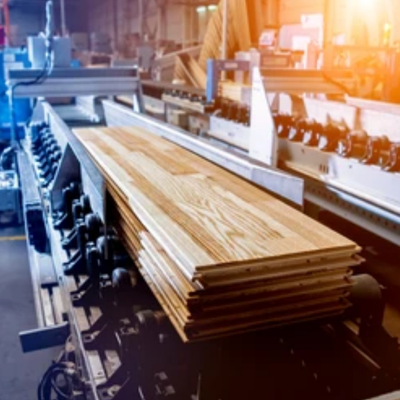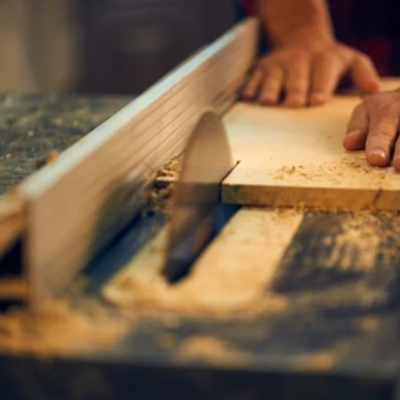Forestry and Wood Working Machine Automation
Driving technology in Forestry and Wood Working Machine Automation
With our soft starters and variable frequency drives, we can utilize our high torque capability, coupled with the ability to start and stop quickly to maximize operation time by minimizing the wait for transition periods.
Key Technologies in Forestry and Woodworking Automation
Robotics
Robotics has become integral to modern forestry operations. Robots can perform tasks such as planting trees, harvesting timber, and even monitoring forest health. These robots are equipped with sensors and cameras that enable them to navigate challenging terrains and make real-time decisions.
CNC Machines
CNC machines have revolutionized woodworking by enabling precise cutting, carving, and shaping of wood. These machines are programmed with detailed instructions, ensuring consistent and accurate output. CNC technology has expanded the possibilities in furniture making, cabinetry, and intricate wood designs.
Drones
Drones are increasingly used for aerial surveys and monitoring. They provide valuable insights into forest conditions, allowing for better planning and management. Drones equipped with LiDAR technology can create detailed 3D maps of forest areas, aiding in resource management and conservation efforts.
AI and Machine Learning
AI and machine learning algorithms analyze vast amounts of data to optimize operations. For instance, AI can predict the best time to harvest timber based on factors like weather conditions and tree health. Machine learning algorithms can also improve the accuracy of automated machinery by learning from past operations.
Application for Forestry and Woodworking Machine Automation
Efficient Timber Harvesting
Automated machinery, such as feller bunchers and harvesters, streamline the process of cutting, delimbing, and bucking trees. These machines improve productivity by performing tasks rapidly and with precision, reducing labor costs and time.
Precision Wood Processing
CNC machines in woodworking can precisely cut, carve, and shape wood, allowing for the creation of intricate designs and high-quality products. Automation ensures consistent and repeatable results, enhancing overall product quality
Sustainable Forest Management
Drones equipped with advanced sensors and AI algorithms monitor forest health, detect diseases, and assess damage from natural disasters.
Sustainable Practices
Automated systems optimize the use of raw materials and minimize waste, contributing to more sustainable forestry practices. Precision cutting and processing techniques ensure that each log is used efficiently, reducing our environmental impact.
Environmental Impact
Automated forestry machines can selectively harvest trees, preserving the surrounding ecosystem and promoting sustainable forest management. This selective harvesting approach reduces environmental impact and ensures the longevity of forest resources.
Benefits of Forestry and Wood working Automation

Enhanced Efficiency
Automation has streamlined numerous tasks, reducing the time and labor required for operations. Machines equipped with advanced sensors and AI algorithms can process wood with remarkable speed and accuracy, leading to increased productivity and reduced waste.
Improved Safety
Working in forestry and woodworking can be hazardous, with risks ranging from handling heavy machinery to exposure to harmful chemicals. Automation minimizes human intervention in dangerous tasks, thereby reducing the likelihood of accidents and injuries. Robots and automated systems can undertake tasks such as tree felling, sawing, and material handling, ensuring a safer work environment.
Precision and Quality
Automated machines are designed to perform tasks with a high degree of precision. In woodworking, this precision translates to better product quality and consistency. Computer Numerical Control (CNC) machines, for example, can carve intricate designs with minimal errors, ensuring that every piece meets exact specifications.
Sustainability
Automation also plays a crucial role in promoting sustainable practices. Automated systems can optimize the use of resources, ensuring minimal waste generation. Additionally, precision in cutting and processing reduces the amount of wood discarded, contributing to more efficient resource utilization.
FAQ
How does automation contribute to sustainability in forestry?
Automated systems optimize resource use, minimizing waste generation. Precision in cutting and processing ensures that every piece of wood is utilized efficiently. Additionally, automated monitoring and maintenance promote sustainable forest management practices.
How does automation improve efficiency in forestry and woodworking?
Automation streamlines tasks, reduces labor requirements, and speeds up processes. Automated machines can perform tasks such as tree felling, sawing, and carving with high precision and speed, leading to increased productivity and reduced waste.
What is forestry and woodworking machine automation?
Forestry and woodworking machine automation refers to the use of advanced technologies, such as robotics, AI, drones, and CNC machines, to enhance the efficiency, precision, and safety of operations in forestry and woodworking industries.

